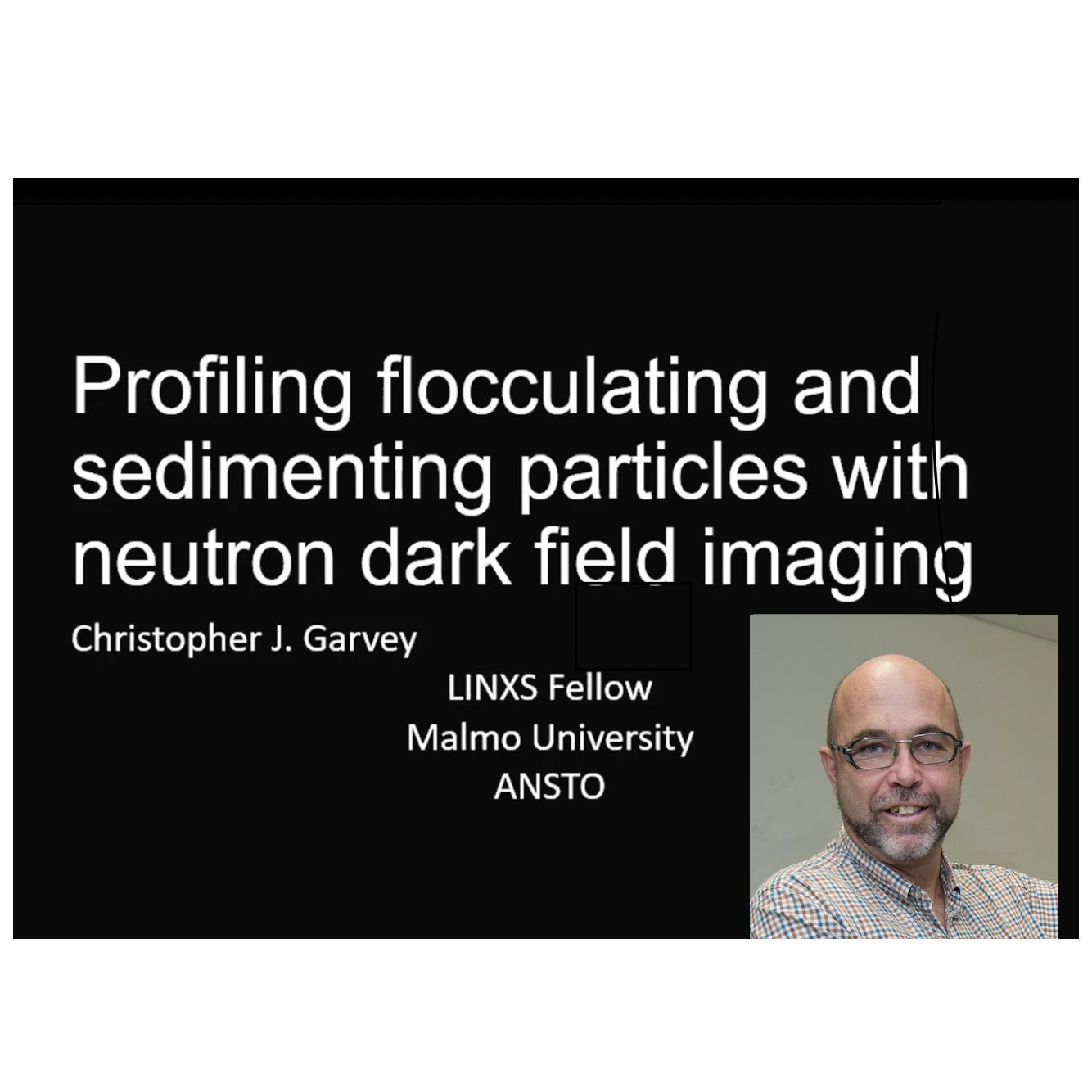VIDEO - Profiling flocculating and sedimenting particles with neutron dark field imaging, with LINXS Guest Researcher Chris J Garvey


VIDEO - Profiling flocculating and sedimenting particles with neutron dark field imaging, with LINXS Guest Researcher Chris J Garvey
Flocculants are usually polymeric molecules which cause the aggregation of particles in suspensions and will modify the sedimentation of particles. The gravitational field and the hydrodynamics of the aggregates result in a situation where larger aggregates sediment more quickly for less efficient packing and smaller particles will sediment more slowly. Such considerations are important in the formation of filter cakes where the porosity of the structure is critical for the transport of water and the hydraulic conductivity.
Speaker: LINXS visiting researcher Dr. Christopher J. Garvey from ANSTO, Australia.
This webinar is part of LINXS series of webinars hosted by visting guest researchers.
Abstract
Flocculants are usually polymeric molecules which cause the aggregation of particles in suspensions and will modify the sedimentation of particles. The gravitational field and the hydrodynamics of the aggregates result in a situation where larger aggregates sediment more quickly for less efficient packing and smaller particles will sediment more slowly. Such considerations are important in the formation of filter cakes where the porosity of the structure is critical for the transport of water and the hydraulic conductivity. We consider the structural profile of flocculated CaCO3 particle suspensions under the influence of gravity and a commercial flocculent in the direction of the gravitational field with the aim of an understanding of the packing of particles. Dark field imaging [1] provides high resolution imaging of the structures formed by sedimented particles with contrast provided by the arrangements of particles over different correlation lengths. The techniques provides a detailed understanding of the porosity of the filter cake. We will present a general method for studying the structures formed by particles where it is useful to correlate microscopic structure to spatial position. Although the specific example discussed is a model system for mineral sludges the approach is demonstrated generally applicable to diverse systems including particle and cell suspensions and food gels.
Biography
Christopher Garvey is a research scientist with background in neutron and X-ray scattering and chemical engineering. While a LINXS fellow he has applied the perspectives of neutron and X-ray science to a diverse range of scientific problems involving soft condensed matter. His research and its direction is guided by a belief in role of science and engineering in providing a more sustainable modern society.
